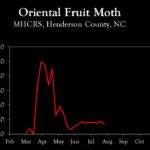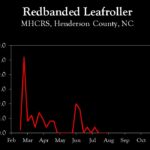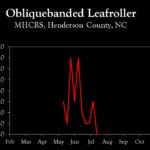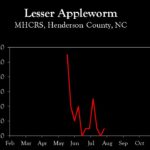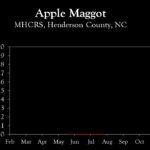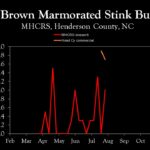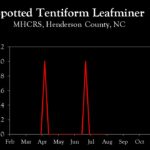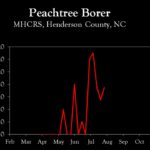WNC Orchard Insect Pest Populations – August 3, 2023
go.ncsu.edu/readext?949061
en Español / em Português
El inglés es el idioma de control de esta página. En la medida en que haya algún conflicto entre la traducción al inglés y la traducción, el inglés prevalece.
Al hacer clic en el enlace de traducción se activa un servicio de traducción gratuito para convertir la página al español. Al igual que con cualquier traducción por Internet, la conversión no es sensible al contexto y puede que no traduzca el texto en su significado original. NC State Extension no garantiza la exactitud del texto traducido. Por favor, tenga en cuenta que algunas aplicaciones y/o servicios pueden no funcionar como se espera cuando se traducen.
Português
Inglês é o idioma de controle desta página. Na medida que haja algum conflito entre o texto original em Inglês e a tradução, o Inglês prevalece.
Ao clicar no link de tradução, um serviço gratuito de tradução será ativado para converter a página para o Português. Como em qualquer tradução pela internet, a conversão não é sensivel ao contexto e pode não ocorrer a tradução para o significado orginal. O serviço de Extensão da Carolina do Norte (NC State Extension) não garante a exatidão do texto traduzido. Por favor, observe que algumas funções ou serviços podem não funcionar como esperado após a tradução.
English
English is the controlling language of this page. To the extent there is any conflict between the English text and the translation, English controls.
Clicking on the translation link activates a free translation service to convert the page to Spanish. As with any Internet translation, the conversion is not context-sensitive and may not translate the text to its original meaning. NC State Extension does not guarantee the accuracy of the translated text. Please note that some applications and/or services may not function as expected when translated.
Collapse ▲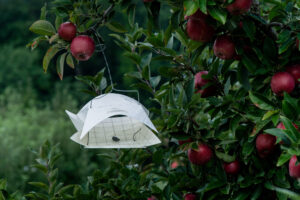 I apologize for the delayed update this week, but travel and field work has set us behind. The pest complex of greatest importance remains the internal lepidopteran complex (codling moth and oriental fruit moth) and brown marmorated stink bug, the latter of greatest importance in lower elevations.
I apologize for the delayed update this week, but travel and field work has set us behind. The pest complex of greatest importance remains the internal lepidopteran complex (codling moth and oriental fruit moth) and brown marmorated stink bug, the latter of greatest importance in lower elevations.
Second generation codling moth has completed egg laying in lower elevation areas, and is more than halfway complete in higher elevations (e.g., ≥2000 ft). Unless codling moth damage exists in orchards, the potential for new damage from this point on is minimal.
We are approaching that time when 3rd and 4th generations of OFM are beginning to overlap, which contributes to increasing populations later in the year. If pheromone trap captures increase to greater than 7 to 10 moths/trap, an insecticide spray should be considered. In those areas where BMSB is emerging and pyrethroids will be sprayed, OFM will also be controlled.
First generation BMSB adult emergence is underway in lower elevation orchards (about 1000 ft and lower). In Cleveland County, 821 DD have accumulated since biofix, which is equivalent to emergence of about 25% of the adult population. DD accumulations are considerably behind in Henderson (641 DD) and Wilkes Counties (655 DD), and adult emergence is not expected for another 10 to 14 days. However, as mentioned in last week’s update, Granny Smith apples have been shown to be highly attractive to BMSB beginning in late July to early August, so an insecticide application should be considered on that cultivar.
Finally, remember that the Mountain Hort Field Day is on Thursday, August 10, at the Mountain Horticultural Crops Research and Extension Center in Mills River. This field day includes several apple presentations in the research orchards as well as talks on tomatoes, vegetables, specialty crops, and alternative crops. More details are in the MHCREC announcement.
Learn more about southeastern apple insect pests at the Apple Insect Management page.
2023 Average Weekly Trap Captures
| HENDERSON COUNTY | |||
| Insects per trap | |||
| July 17 | July 24 | Aug 1 | |
| Codling moth | 1.0 | 1.0 | 4.5 |
| Oriental fruit moth | 15.5 | 18.0 | 13.5 |
| Tufted apple bud moth | 0.0 | 0.0 | 1.0 |
| Redbanded leafroller | 0.0 | 0.0 | 0.0 |
| Obliquebanded leafroller | 0.0 | 0.0 | 0.0 |
| Lesser appleworm | 1.0 | 0.0 | 1.0 |
| Apple maggot (abandoned and research orchards) | 0.0 | 0.0 | 0.0 |
| Brown marmorated stink bug (commercial) | – | 1.9 | 1.7 |
| Brown marmorated stink bug (unsprayed) | 1.3 | 0.0 | 1.0 |
| Spotted tentiform leafminer | 0.0 | 0.0 | 0.0 |
| Dogwood borer | 20.0 | 17.0 | 11.0 |
| Peachtree borer | 7.5 | 5.5 | 7.5 |
| Lesser peachtree borer | 4.0 | 3.0 | 2.5 |
| San Jose scale | 225.0 | 15.0 | 0.0 |
*Note that these averages illustrate only the timing of insect emergence and fluctuations in populations, and are not representative of population levels in any given orchard. The only way to have an accurate assessment of an individual orchard’s populations is to set up traps in that orchard.
2023 Accumulated Degree Days
| HENDERSON COUNTY | ||||
| July 17 | July 24 | Aug 1 | ||
| Codling moth (Biofix: April 7) | 1451 | 1605 | 1802 | |
| Oriental fruit moth (Biofix: March 24) | 2086 | 2275 | 2506 | |
| Tufted apple bud moth (Biofix: April 21) | 1733 | 1922 | 2153 | |




